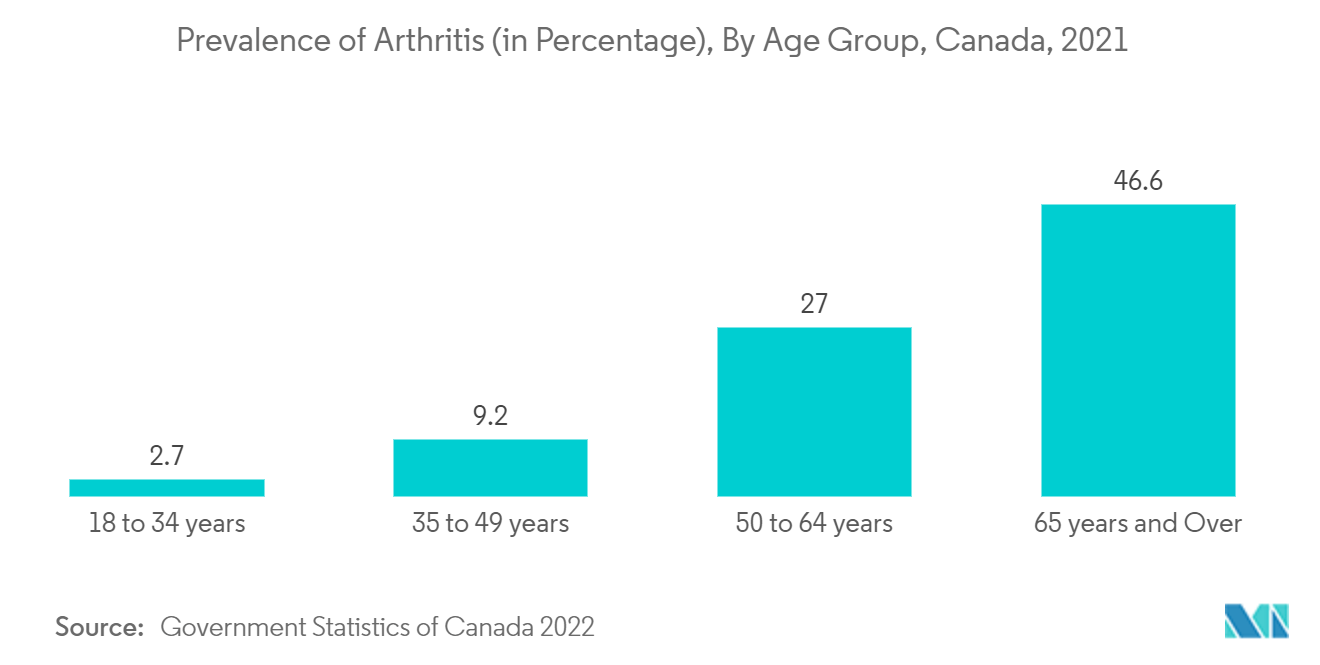Market Trends of TNF Inhibitors Industry
Rheumatoid Arthritis Segment Is Expected to Project Large Growth Over the Forecast Period
Rheumatoid Arthritis (RA) is an autoimmune condition in which the immune system of the own body attacks the healthy tissues of the body. Biologic drugs work by targeting proteins called cytokines, which are responsible for the inflammation caused by the immune system's response. In the case of 'anti-TNF' drugs, the cytokines being targeted are known as 'TNF' (TumourNecrosis Factor alpha). The factors such as the growing burden of RA disease, approval of drugs by the regulatory authority, and the launch of products by the market players are propelling the growth of the market segment over the forecast period.
The growing burden of rheumatoid arthritis is largely propelling the growth of the market segment. According to the Global RA Network report 2021, more than 350 million people were living with arthritis around the world in 2021, and its burden is expected to increase owing to various factors, one of which is the rising burden of the geriatric population around the globe. Such a high prevalence of rheumatoid arthritis is also boosting the growth of the studied market.
Additionally, the approval of drugs by different regulatory authorities of the region and the launch of products is expected to drive the growth of the studied segment. For instance, in March 2021, Samsung Bioepis launched its adalimumab biosimilar Hadlima in Australia in partnership with Merck & Co. Hadlima is approved for the treatment of rheumatoid arthritis and other indications in Australia. Such launch of anti-TNF biosimilars for the treatment of rheumatoid arthritis is propelling the growth of the market segment.
Thus, owing to the abovementioned factors, the market segment is expected to project significant growth over the forecast period.

North America is Expected to Witness a Growth in the Market Over the Forecast Period
North America is expected to hold a major market share in the overall TNF inhibitors market throughout the forecast period. The dominance is expected due to several factors, such as well-established direct reimbursement policies and the availability of advanced healthcare infrastructure in the region.
The growing burden of autoimmune diseases in different countries worldwide is also propelling the market's growth. For instance, in 2022, the Crohns and Colitis Foundation report mentioned that Crohn's disease and ulcerative colitis affected 1.6 million Americans, most of whom are aged before 35. Similarly, the Government Statistics Canada data published in August 2022, the number of arthritis in Canada in 2021 was 6,087,600. Such a high prevalence of autoimmune disorders in North American countries is expected to drive the demand for effective therapeutics, thereby boosting the market growth in this region.
Also, the accelerating product approval procedure by regulatory authorities in North America is expected to propel the market's growth in the region. For instance, in February 2022, Pfizer Inc. received United States Food and Drug Administration (FDA) acceptance for review of the Prior Approval Supplement (PAS) to the Biologics License Application (BLA) for ABRILADA (adalimumab-AFB) as an interchangeable biosimilar to Humira (adalimumab).
Thus, owing to the abovementioned factors, such as the rising prevalence of autoimmune disorders and the presence of key market players along with frequent product launches, the North American region is expected to show lucrative growth over the forecast period.


